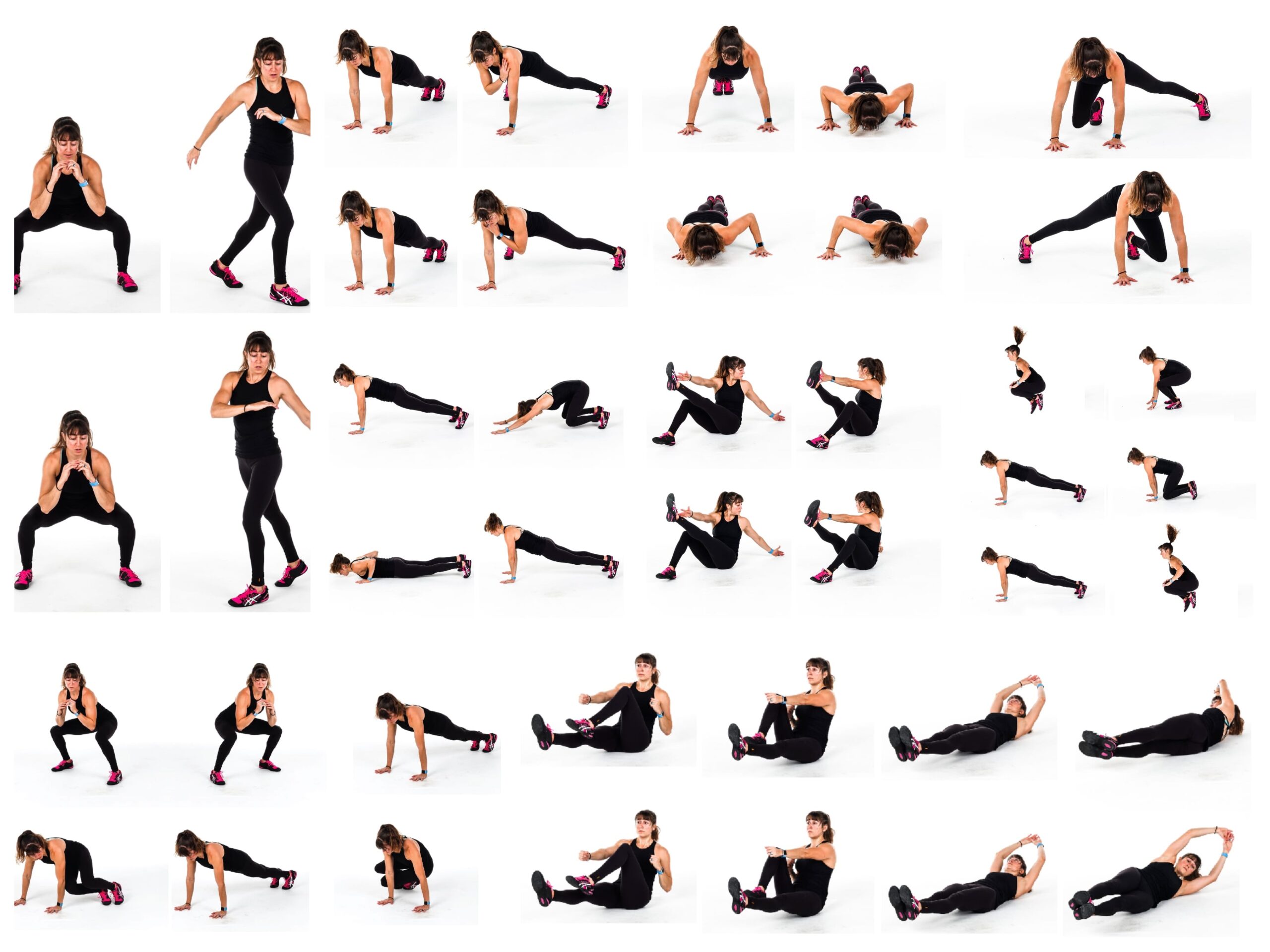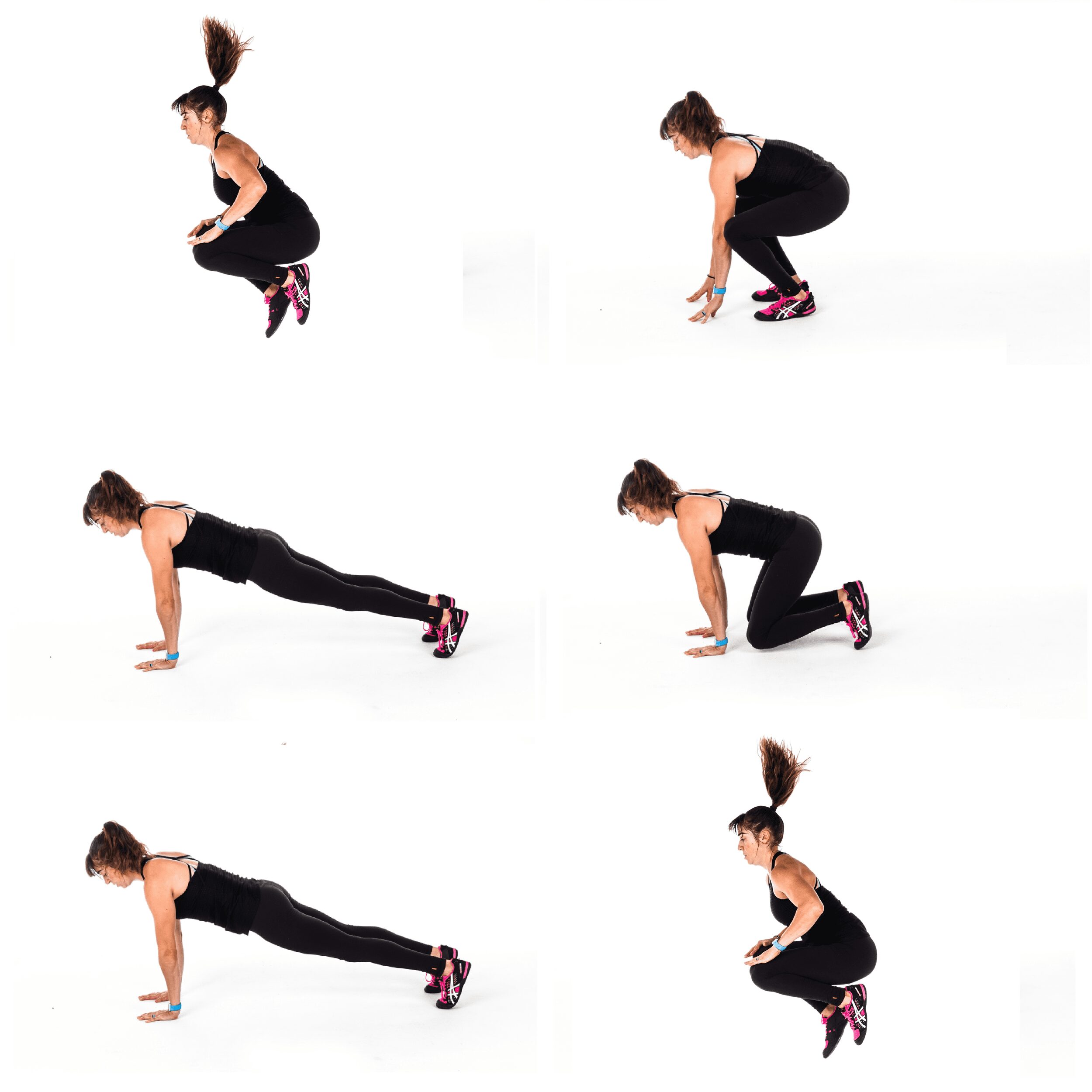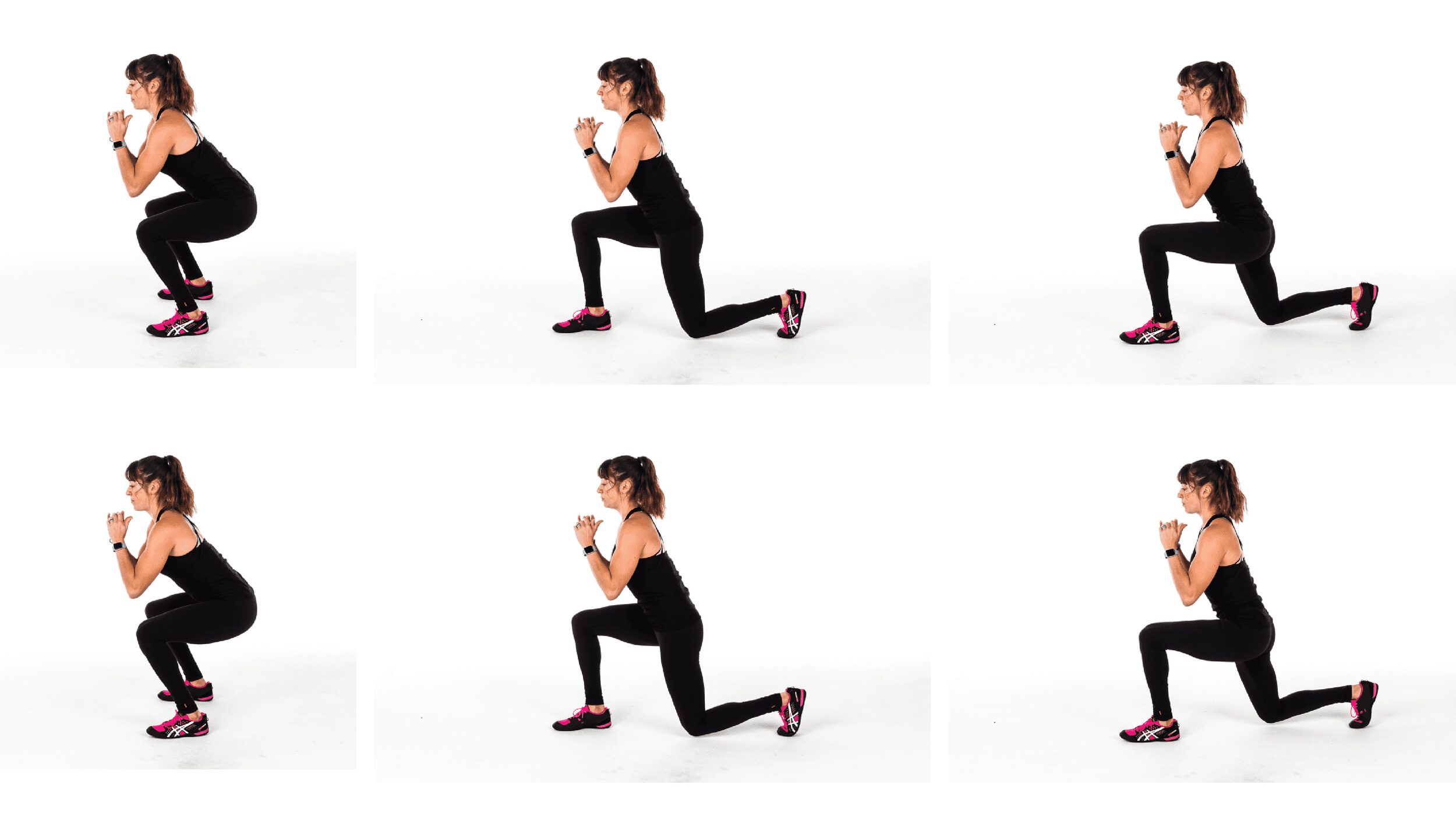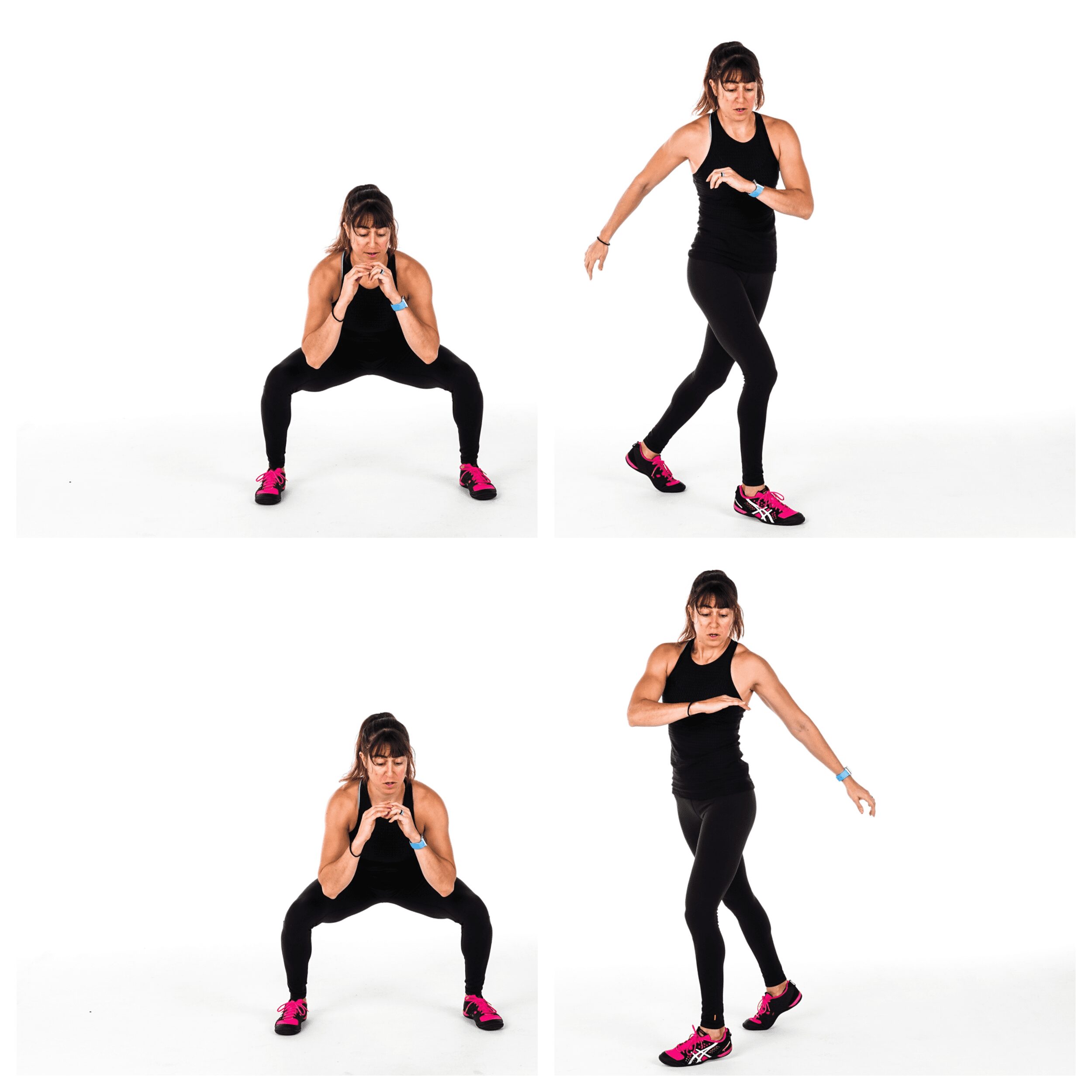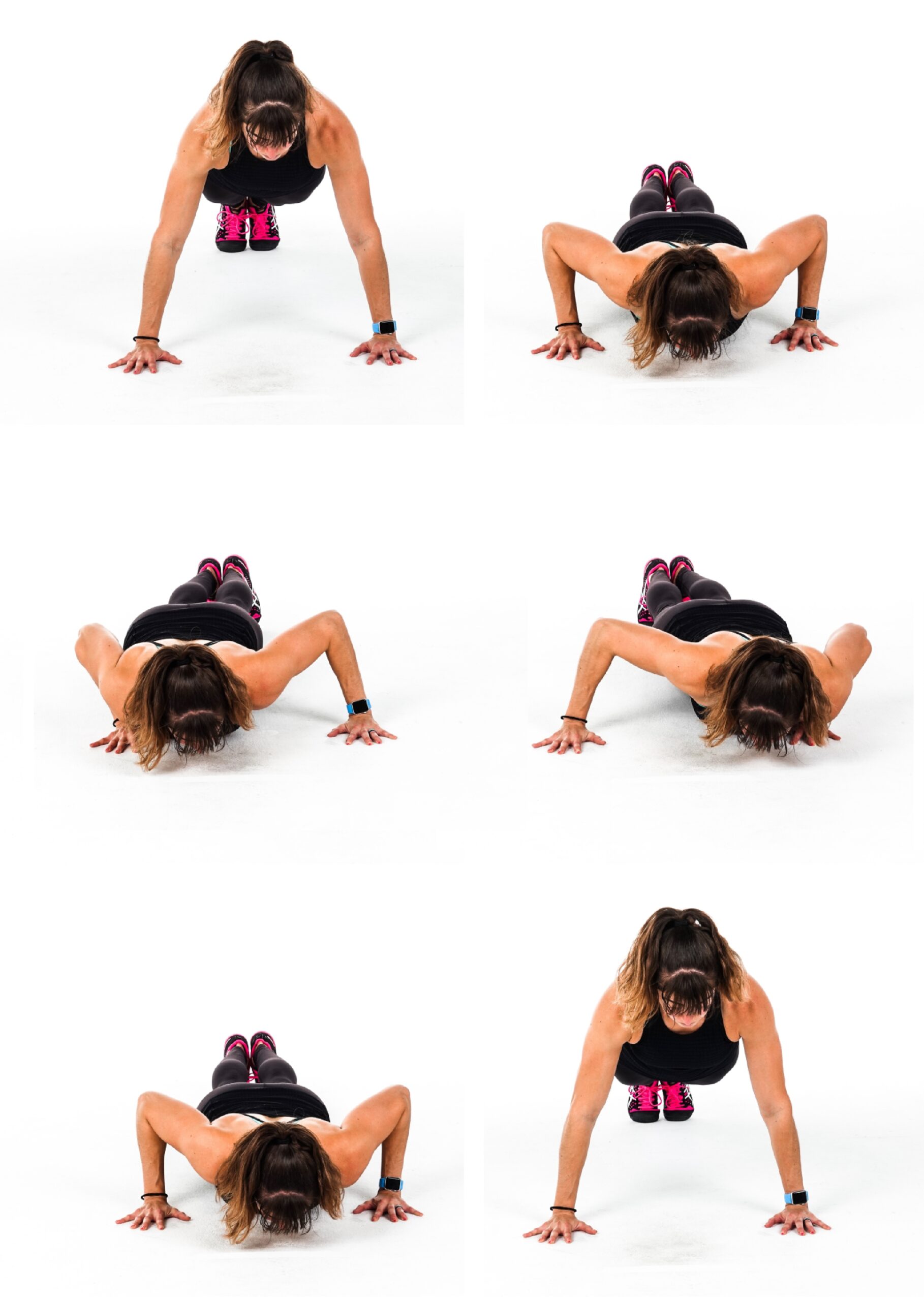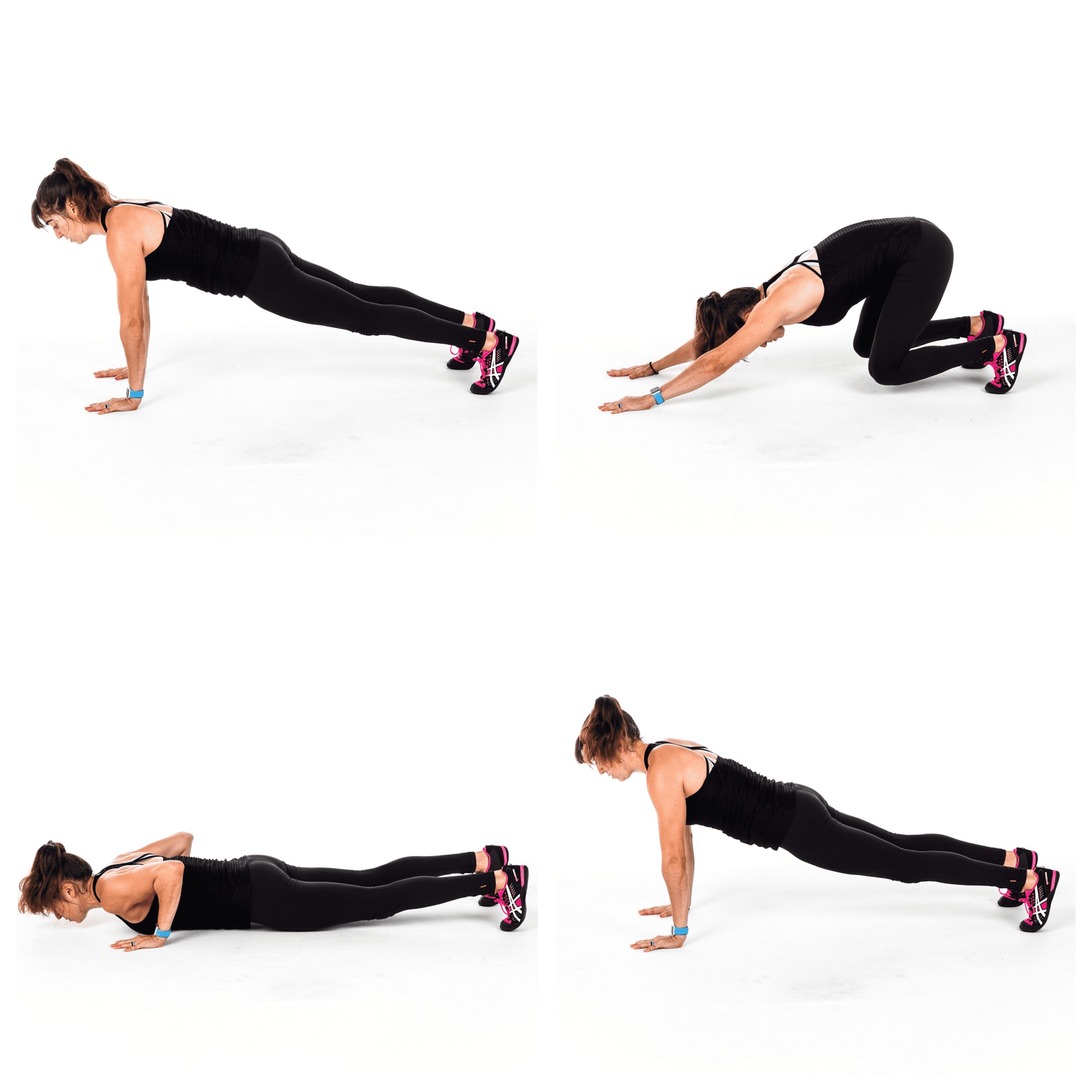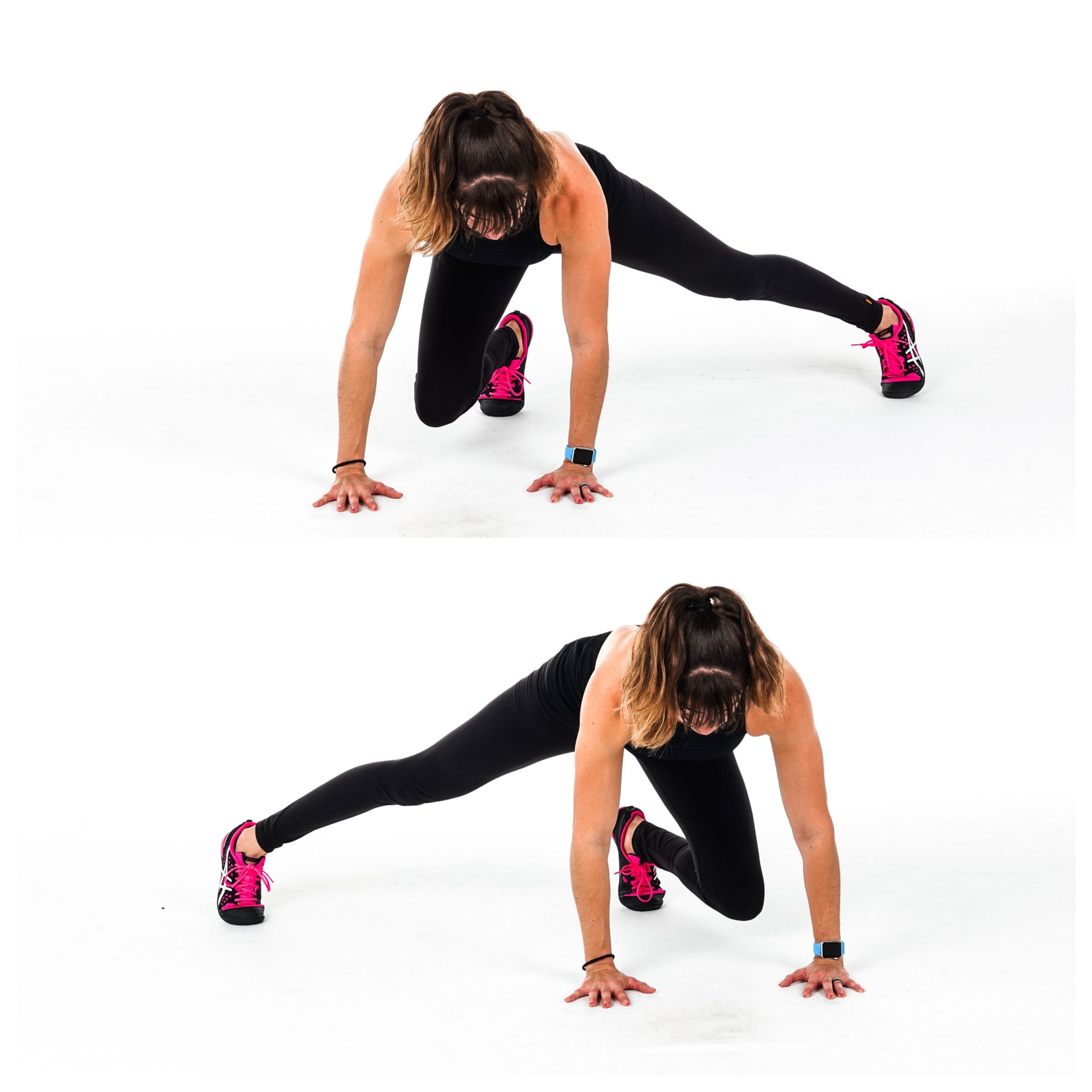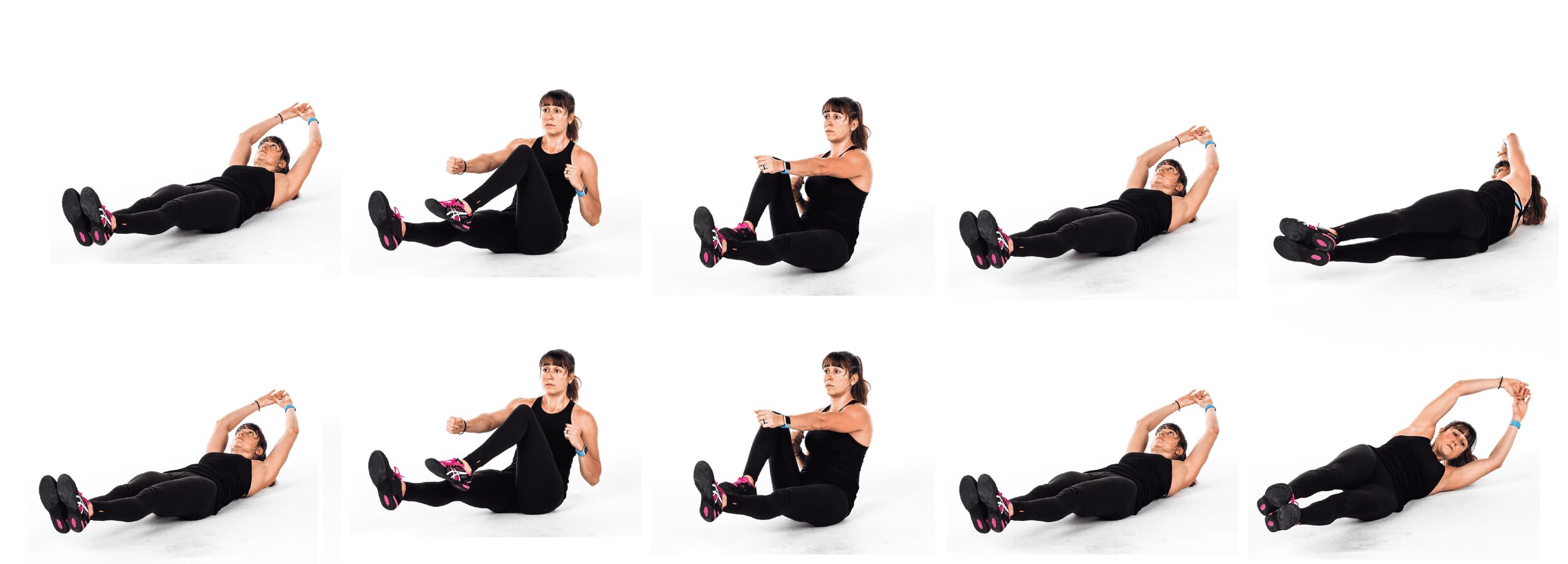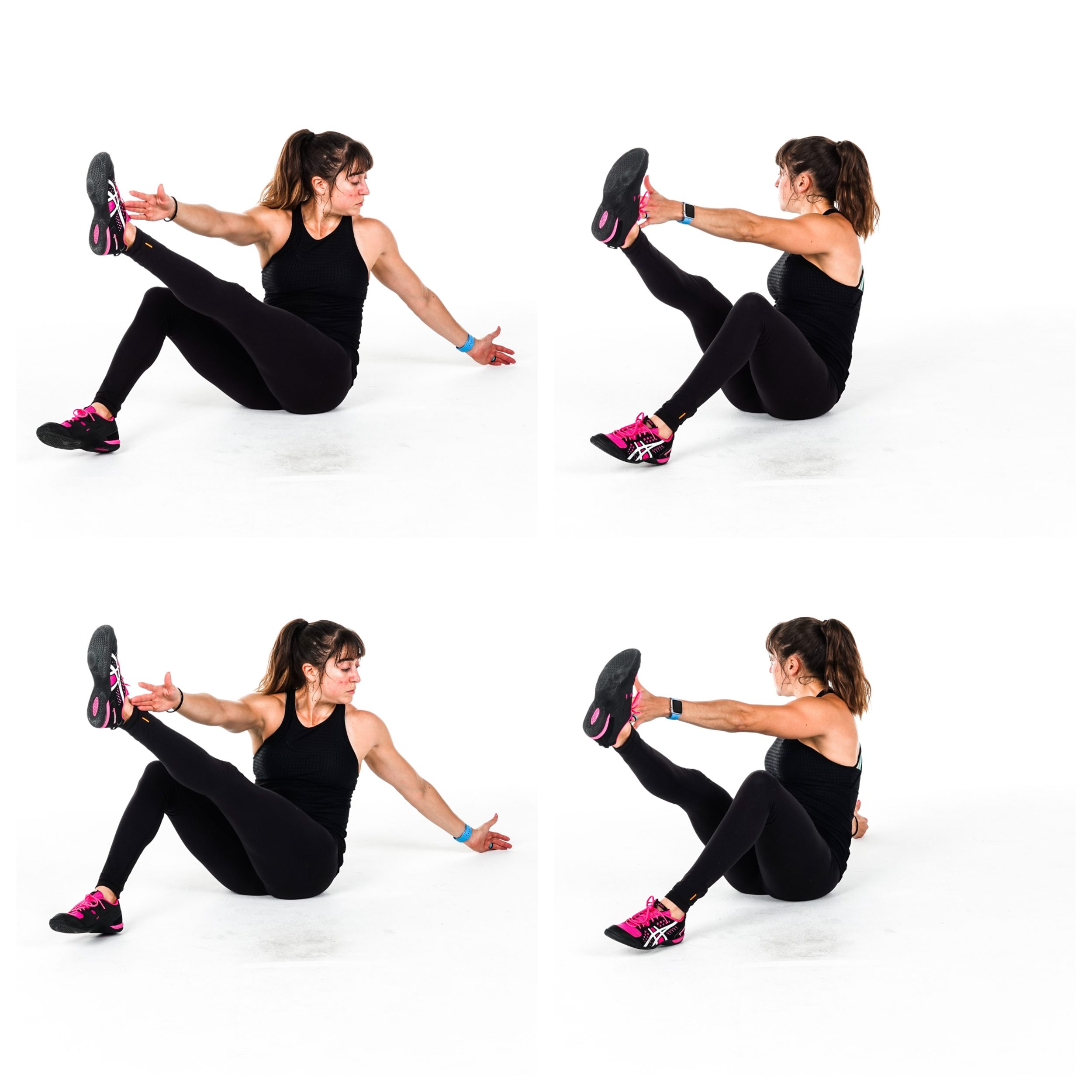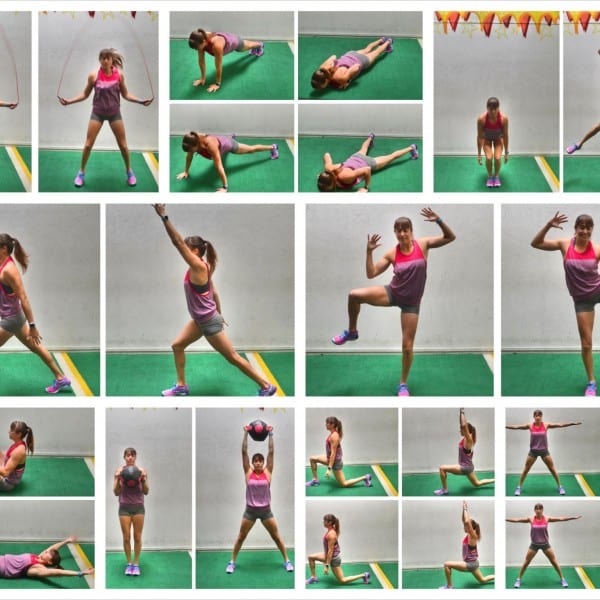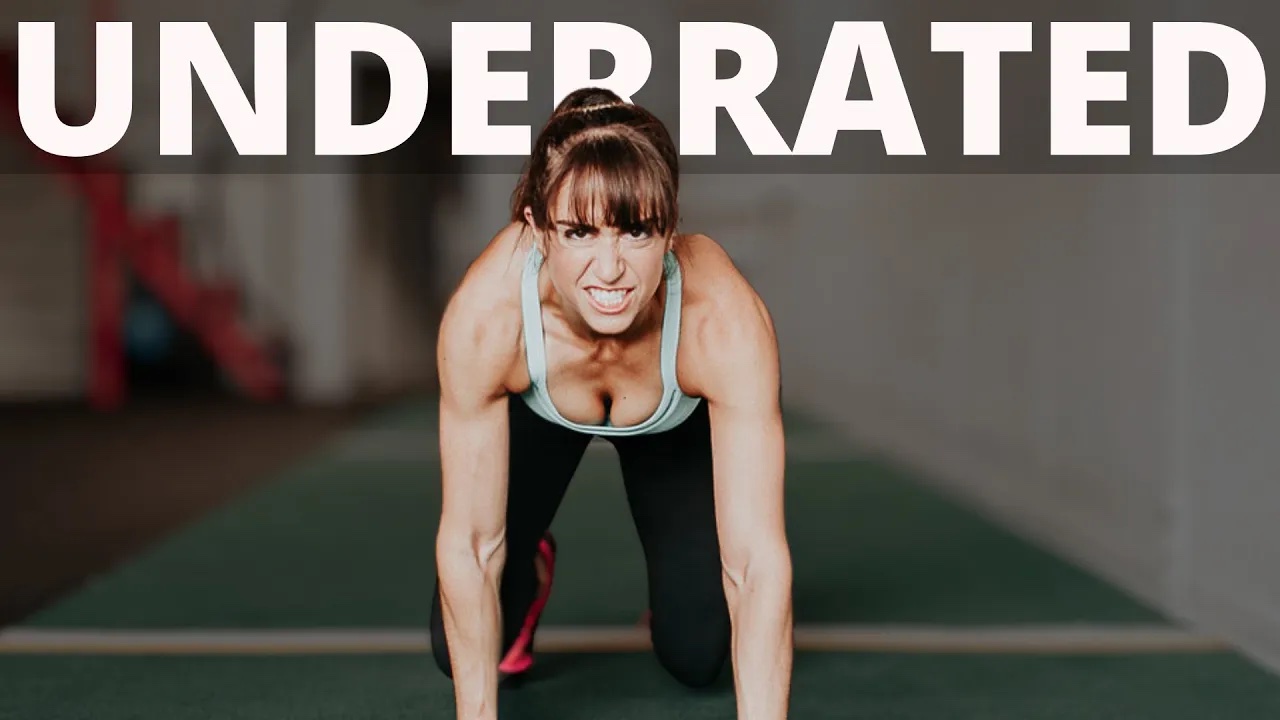
The Best Bodyweight Exercise (Everyone Hates)
Unpopular opinion…
I think Burpees are underrated.
You may be like, “WHAAAAT!? I see burpees in everything. They’re overdone!”
And while I agree they can be overused, misused and simply put in a workout just to make it harder…
I also think they aren’t given their due credit for being more than just a hard move, but an amazing full-body cardio move to improve your mind-body connection and functional fitness.
Burpees are an exercise that too often don’t get enough respect for being a move that has to be EARNED, but that can, and should, also be done in some form at EVERY age.
Yup…EVERY age…
That’s why in this video I want to explain WHY burpees can be so valuable to do even as we get older, but also why this move can be such a challenge and how we can break it down and modify it to fit our needs and goals!
And if you’re right now shaking your head saying, “NOPE! Burpees aren’t for me!”
I’d urge you to hear me out on WHY they can be so beneficial and then check out the modifications I share!

So…how and why are burpees so beneficial to include?
I’ll be the first to admit…I don’t like burpees.
They stink.
They’re hard.
They’re uncomfortable.
They never seem to get easier…especially if we do them correctly with intention and focus.
And because they are a very advanced move, I’m very careful with how I program them into progressions for clients.
They are a complicated, full-body, explosive movement.
They challenge your mind-body connection, requiring you to perform multiple joint actions and engage muscle groups down your entire body efficiently in sequence to move quickly and powerfully.
Lose tension in one area and your burpee looks like the worm. Your push up becomes a belly flop.
And not only do they require a strong mind-body connection and great full body strength and stability, they also require more MOBILITY than we realize.
To be able to jump your feet fully in close enough to your hands to jump up at the top, requires more hip and even ankle mobility than we recognize!
But what makes them a hard and complicated movement we need to often regress to progress and truly EARN, is also what makes them a valuable exercise that I want every client to build up to as much as possible.
Breaking down the burpee to build up this movement will help you improve your ability to recruit muscles correctly quickly.
It will help you be able to engage muscles throughout your body in sequence to perform functional everyday activities that have us squatting and reaching and bracing all at once.
It will teach you to brace and stabilize while still reacting quickly.
And it will help you maintain the mobility to get down and up easily off the ground.
While you may never do the exact burpee movement in every day life, it can really help us build functional strength through the fact we ask our body to do so many things as once and quickly.
That ability to engage things to stabilize and power movement FAST is what helps us react in everyday life to stay injury free and functionally fit.
It helps us react quickly to catch that glass when it gets knocked off the table.
To avoid slipping and falling when we trip on the curb.
It’s all about that mind-body connection.
And burpees are exceptional at helping us build that.
They are also a great move to improve our conditioning, especially when we are short on time. Working so many areas at once with this fast paced movement is going to get your blood pumping. And even just intervals of 20 seconds of work can be killer!
And while this may sound weird…
They even help us become more comfortable being uncomfortable which is truly invaluable to growth in life and success.
This ability to be comfortable being uncomfortable helps us conquer new challenges, which builds confidence. And the more confident we become, the more we will embrace learning and growth and rock those results as we get older!
Now if you’re starting to be sold on burpees and considering adding them in, you need to make sure you’ve truly EARNED the full variation.
And just because you can “do” a burpee, doesn’t mean that full variation is right for you…YET.
If your burpees look sloppy, like you’re a fish kind of flopping out of the water on dry land, it’s time to check your ego and regress.
Build that core stability. Build that strength.
Build that mobility.
Regress to progress!
Get everything truly working together efficiently so you aren’t just working harder with this move, but actually seeing amazing full-body strength and conditioning gains from it!
So…How Can We Break Down And Modify The Burpee?
I want to break down some key modifications for this move based on some reasons why the burpee is so challenging….
Starting with the fact that it requires more mobility than we recognize.
Challenge #1: I don’t have the mobility to easily get down into the plank and stand back up.
I love using a bench or low box for clients starting out who may not yet have the mobility to easily step or jump back into a high plank and stand back up.
If you notice when you do burpees that you don’t put your hands flat on the ground or you can’t jump your feet in close enough to your hands to easily shift your weight back and stand up, using a bench or box will help.
The incline helps create more “space” so you can more easily jump or step your feet into your hands.
This modification can also be key if you struggle with challenge #2…
Challenge #2: You don’t have the core stability or upper body strength.
The incline can also help reduce the resistance or load on your upper body and core as you move into that plank position and perform the push up.
Because the burpee shouldn’t be a belly flop onto the ground.
There should be a jump or step back into plank then a lower into a push up before you press back up and stand up.
By using an incline you modify the push up and plank, which can help you slow build that core and upper body strength.
As you build up, you can lower the incline slowly toward the ground, increasing the resistance and load on your upper body and core!
And even starting out, if you don’t have a proper incline to use, try taking out the push up even and just focus on that nice plank position to start. Or even consider a knee push up variation.
But focus not only on moving quickly but also proper form with each component of the move.
I mention this because SPEED and moving quickly with exercises has to be earned!
Which brings me to Challenge #3: Not having the neuromuscular efficiency aka the speed or power.
We can move faster while performing a movement correctly because we’ve built up that mind-body connection.
And that takes time.
To start, you may need to step with the burpee over jumping.
Or you may need to slow things down.
I know often we don’t want to do that with the burpee because we are using it as a cardio move.
This is why modifying it to allow ourselves to move quickly and get our blood pumping is key.
BUT always modifying may also be why you feel “stuck,” unable to progress to a harder variation.
Sometimes we also need to progress and slow things down.
Then as we master that new movement pattern, we can slowly speed things up!
So consider including both burpees slightly broken down into components as you build up, removing the push up or only doing a half burpee without the jump up while also taking time to do longer intervals of conditioning work where you can slow things down to focus on the full movement!
Now the final challenge I want to address and help you work around is…
Challenge #4: Modifying around aches and pains.
I’m going to tell you right now, the burpee may not be right for you in the starting phases of rehab.
But your goal should ALWAYS be to build back and retrain whatever movement patterns and exercises you can.
The key is to find ways to reduce mobility or strength demands whenever possible in that rebuilding phase.
If you have a wrist injury, that may mean using a bench to reduce the load on your upper body.
It may mean slowing down to place your hands on dumbbells instead to keep a neutral wrist position.
It may even mean using an incline to modify into a forearm plank as you step back.
But you want to find ways to embrace the components of an exercise you can train while avoiding overload.
Same can be said for knee or hip injuries.
Maybe you remove all jumping and instead step back. Or you even use sliders to reduce impact more.
Maybe you use the incline to give yourself space so you don’t need as much hip or ankle mobility to step back up and stand up.
Or maybe you even do a bulldog variation to target those quads more while putting less stress on your core.
Again it is about considering what you need to eliminate, but what you can still do in a move to use as much as possible!
While the burpee may not be right for you at your current fitness level or phase of rehab…
While it may not be right for you YET…
I think too often we just demonize moves or write them off over thinking…
“How can I regress to progress?”
“How can I build back?”
We don’t break moves down, slow down the speed and RETRAIN movement and recruitment patterns to function optimally…
We just AVOID.
And this doesn’t help us stay functionally fit till our final day on this planet.
It honestly puts us at greater risk for injury in everyday life!
The more we can retrain and the less we have to FEAR movements, the stronger and more independent we will be till our final day on this earth!
So if you’ve been just hating on burpees, avoiding them thinking they’re hard and pointless…
Think again!
Find ways to include this amazing move in your workout routine using my tips to modify around your challenges and see your strength and conditioning improve dramatically when you’ve earned this killer exercise!
Ready for some fun workouts that will challenge you no matter your fitness level?
Take your training to the next level with my Dynamic Strength Program.
–> LEARN MORE


